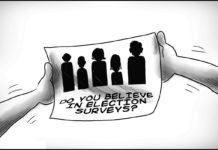[av_one_full first min_height=” vertical_alignment=” space=” custom_margin=” margin=’0px’ padding=’0px’ border=” border_color=” radius=’0px’ background_color=” src=” background_position=’top left’ background_repeat=’no-repeat’ animation=”]
[av_heading tag=’h3′ padding=’10’ heading=’Christmas thrives on lies’ color=” style=’blockquote modern-quote’ custom_font=” size=” subheading_active=’subheading_below’ subheading_size=’15’ custom_class=”]
BY HERBERT VEGO
[/av_heading]
[av_textblock size=” font_color=” color=”]
THE COUNTDOWN has begun in anticipation of Christmas day come Dec. 25 – the supposed birthday of Jesus Christ. Even non-Christians celebrate it. In fact, it was an American Jew, Irving Berlin, who composed one of the most popular Christmas songs, White Christmas – first recorded by Bing Crosby in 1942.
On the other hand, there are Christian sects which do not believe in Christmas. Just yesterday, I greeted my friend Rodolfo Jarumahum Jr., “Merry Christmas.” Being a Jehovah’s Witness, he just smiled, “Hi.”
Christmas has become so popular that opposition to its authenticity is no longer taken seriously. Indeed there is now no doubt among Bible Scholars that Jesus could not have been born on a winter day, Dec. 25, in 4 B.C. For on the day of his birth, the shepherds in Bethlehem were out in the fields grazing sheep – an impossible scene in snowy winter that could have frozen the naked child Jesus to death.
Haven’t we all wondered why he was born in 4 B.C. or four years before his own birth? This obvious error sprang from calendar maker Dionysius Exiguus, who reckoned in the 6th century that Christ was born 754 years after the founding of Rome. It later turned out he was four years off in dating the year of Christ’s birth.
The celebration of the first Dec. 25 Christmas – according to Roman Catholic Church history – occurred in Rome in 320 A.D. It was no coincidence that the date had always been celebrated by pagans as the birthday of Saturnalia, the god of agriculture who was also known as the “Unconquered Sun.”
That first “mass of Christ” was aimed at converting Saturn’s believers into Christianity without discarding their cherished 12 days of feast, merry-making and gift-giving. The church fathers at that time had no choice but tolerate the inebriation and free sex that new converts had been accustomed to. The transition from the “Unconquered Sun” to the “Son of God” had thus begun.
With the Protestant Reformation in Europe in the 16th century, the followers of Martin Luther (a German) and John Calvin (a Swiss) initially questioned the propriety of celebrating Christmas because of its inaccurate date and its pagan origin. A Puritan named William Prynne made a determined effort to abolish Christmas, compelling the government of Scotland to forbid it in 1593. It was also decreed illegal by Commonwealth England in the years 1649 to 1660. The Puritan tirade lasted over a century in Scotland and England.
In spite of anti-Christmas pamphlets, sermons, speeches and even incarcerations of celebrators, the Puritan wish eventually vanished. Since then, the symbols of Christmas have mushroomed.
The mistletoe — a parasitic shrub that grows on oak tree and is still the most distinguished Christmas decoration in the United States and Europe – was a Saturnalian “protector against infertility, disease and poison.”
The Western world has modernized Christmas with commercial trappings. The first Christmas card surfaced only in 1843 when an Englishman, J. C. Horsly, lithographed in color on a thousand copies of stiff cardboard a group of young and old people raising glasses of wine over the words “A Merry Christmas and a Happy New Year to you.” A copy sent by John Washborn to James Peters of 22 Theberton St., Islington, London, still survives.
Unfortunately, we can no longer handle today’s Christmas “cards” that reach us visually via cellular phones, tablets or bigger laptops and personal computers.
Santa Claus — a living Christmas symbol personified by a bearded, fat, red-robed gift giver – is a “reincarnation” of Saint Nicholas, a generous 4th-century patriarch of Constantinople (now Istanbul, Turkey). His evolution from a religious leader to a gift giver was probably a natural result of the Catholic Church’s desire to deflect Christmas’ Saturnalian origin and appease the Protestants.
Yes, Virginia, there is Santa Claus in another Christmas lie – that he hurtles through space on a sleigh pulled by reindeers, dropping goodies into hanged socks and stockings of well-behaved children./PN
[/av_textblock]
[/av_one_full]



